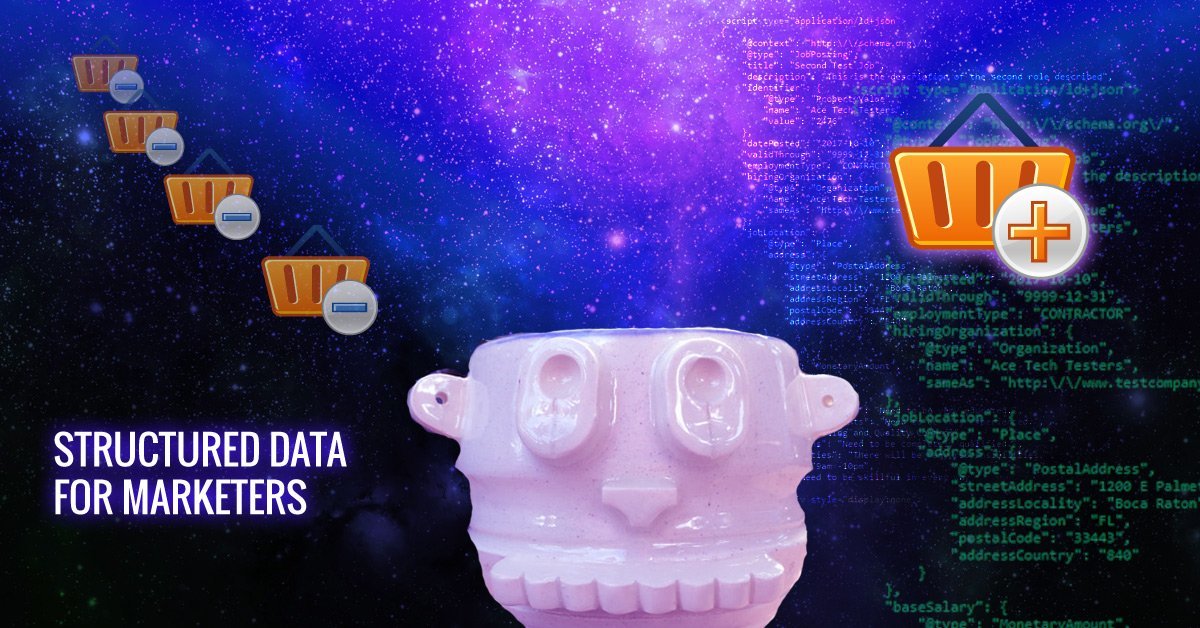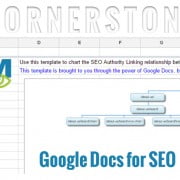Structured Data Marketing
Structured Data Marketing is to yesterday’s online marketing like yesterday’s online marketing was to print. It’s a way to make web pages so that robots understand them better. It’s immediately important, today, for making search engines send more traffic. Artificial intelligence needs certainty when determining what conclusions to deliver: what pizza place to call, what airline has the best deals, what car is safest. There’s no better way to publish information so that tomorrow’s digital agents connect your business with tomorrow’s customers with certainty, the certainty needed to make a recommendation and sale.
Structured Data Marketing doesn’t sound exciting but it is.
Structured Data sounds somewhat boring and technical, doesn’t it? Oh boy! Structured data – sign me up! You literally couldn’t come up with a more boring name for it. But it’s not boring – it’s really powerful. It’s growing in importance. When you understand what it is, and what it’s good for, you’ll understand why it’s the one most important thing marketers need to understand in 2018.

Ceramic robot head from Amber Pelish, my sister.
What is Structured Data?
Structured data isn’t really a big deal to put into motion. It’s just some extra code that gets put into your web site and web pages. It allows robots to be more certain of what they’re looking at. In most cases the extra code, markup, that needs to be added will be automatically added by your content management system. In some cases it needs a little extra help. Together with your web developer you should be able to come up with a plan to publish your web pages using structured data and without too much effort. You may be doing it already.
Structured Data Marketing is Content Marketing for AI
Structured Data is data that’s published online, in web pages, in a manner that marks up, or labels, the different segments of data unambiguously in a manner that makes the data easier to index, easier to return in credible search results. It’s a way of encapsulating the data so that robots who crawl the page can digest the information better. If a robot doesn’t have to make guesses then it considers the information it derives from reading the page more credible.
A good example of a schema for Structured Data is something simple we can all relate with: food. An easy schema to understand is the schema for recipes. Special type of information such as <cooking time> and <nutritional data> is separated and marked up with extra, normally invisible code that unambiguously <labels> each piece of data.
The more precisely labeled and broken down the information is, the easier it is for the robots reading it to insert that information into their database of understanding, ingested in the same format the data will be stored in. This makes it easier. If a robot doesn’t find something easy to understand it typically ignores it.
How can I see the Structured Data?
You can tell if a web page has structured data in it with a testing tool or more manually by viewing the source of the page, something you can do from any browser. If the page has the word “schema.org” somewhere in the code then it probably contains the schema data shortly thereafter. You won’t see the Structured Data other than looking at the code. It’s not intended for you. It’s buried in the code so that people don’t have to pay attention to it.
Structured Data Pages Get Showcased
Some search features discriminate against the lack of Structured Data. Google For Jobs, Google’s aggregation view of listings from job board sites, won’t show most job listings unless their HTML code has Structured Data markup. If you’re listing jobs on your website, without Structured Data markup you can pretty much forget about them showing up in Google for Jobs.
If your site is publishing recipes they won’t show up at the top of Google searches for those recipes, won’t be shown in the precious first positions. Google doesn’t have a special view for recipe like it has for jobs, yet. Structured Data is still critical for getting top ranking even with no special view.
Why is Structured Data more important in the future?
Web crawling robots that work for Google aren’t the only kind of artificial intelligence that matters today. All the big tech brands make their own counter top AI appliances that act as virtual assistants to people, understanding speech and speaking back to their users. Alexa, Siri, Google Assistant are all stand alone devices that don’t require a computer, but tap into the Internet to get the information they need to fulfill their user’s requests.
Here’s some things people might ask these desktop appliances:
- Find a lodging near Yellowstone Park.
- Send a message to the dentist.
- Add dish soap to the groceries.
- Where is the closest place to get coffee?
- Order a pizza with pepperoni on half.
- What’s the cheapest plane tickets to Hawaii next week?
When you type those queries into a search engine you’ll get a list of search engine results, 10 per page typically. When you say it to an agent, to a desktop robot, there is an entirely different expectation: that the robot is going to understand what you mean without showing you a list of search results. It goes beyond search and formulates conclusions from those results – finding a list when appropriate, but choosing one thing when it isn’t. You don’t want your robot telling you “search here then search there” or “read this”. You want your robot to draw conclusions for you, make decisions for you. You want your robot to decide for you and give you the one best thing.
Robot: Do my thinking for me!
Here’s where Structured Data becomes more critical: if you expect your robot to make good decisions for you then it has to have information it considers credible. Let’s imagine there’s five coffee shops nearby and you ask your digital agent “Where is the closest place to get coffee.” Imagine only one of those places has a website that unambiguously declares itself as a venue that sells coffee, via Structured Data in the website’s code. Which business do you think the robot will be certain of, that it’s a coffee shop? Which will the robot tell its user to go to?
How Can My Web Developer Get Structured Data in My Site?
If your web developer hasn’t already started trying to get you to understand why you should implement Structured Data Marketing in your site then you should show this article to them. It’s not hard to understand, nor that difficult to implement for the majority of sites that are served using content management systems like WordPress. It’s important to understand that some things don’t have schemas yet, for example plants and animals. But other things do like garden stores, farms, zoos and pet shops.
We’ve used schemas in staffing websites, for job boards. We’ve used schemas in real estate sites, for listing homes for sale and for rent. We’ve used schemas on almost all the sites we’ve developed to describe the type of business, address information and some kind of description of the product or services offered. If we’re going to publish that kind of information we use schemas as a standard operating procedure. We often apply this code to existing sites as part of SEO for websites. It wouldn’t be following best practices to publish the information any other way.











Comments are closed.